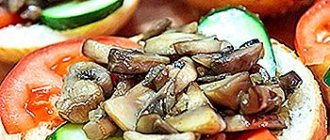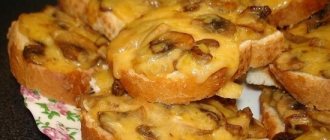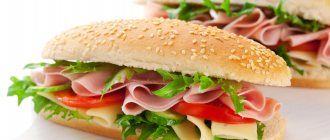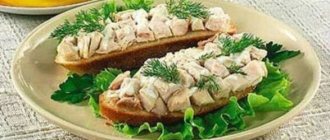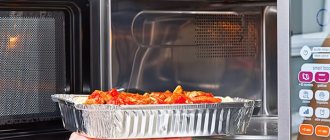— Advertising —
In the 1940s, American engineer Percy Spencer, then working for Raytheon, was testing a magnetron, a device that generates microwaves, when he noticed that the candy bar in his pocket had melted.
This accidental discovery led him to develop the device that we all know today as the microwave oven. Over the years, this device has become an indispensable assistant in the household.
Be that as it may, today there are still many questions regarding the safety of microwave ovens. Is their radiation safe for humans? Does this radiation destroy the nutrients in our food? And what about the famous study on plants fed on microwaved water (more on that later)?
To answer some of the most popular (and pressing) questions surrounding microwaves, we asked three health professionals for their opinions: Natalie Olsen , a registered dietitian and exercise instructor, Natalie Butler , a registered dietitian, and Dr. Karen Gill , a pediatrician. And this is what they told us.
What happens to food when it is cooked in the microwave?
Natalie Olsen: Microwaves are non-ionizing electromagnetic radiation and are used to quickly heat food. They cause molecules to vibrate and accumulate thermal energy (heat).
According to the US Food and Drug Administration (FDA), this type of radiation does not have enough energy to knock electrons out of atoms. This is in contrast to ionizing radiation, which can change atoms and molecules and cause cell damage.
Natalie Butler: Microwave radiation, or microwaves, is generated by an electron tube called a magnetron. These waves are absorbed by the water molecules in the food, causing them to move rapidly, or vibrate, causing the food to heat up.
Karen Gill: Microwave ovens use electromagnetic waves of specific wavelengths and frequencies to heat and cook food. These waves affect certain substances, using their energy to produce heat. First of all, the water contained in the food is heated.
How does a microwave oven work?
- The main element of any microwave oven is the magnetron. It creates microwave frequencies of 2450 MHz that affect water molecules in foods. As a result of the friction created, they begin to rotate, which allows you to keep the food warm.
- The idea is that foods contain many dipole molecules, with a positive electrical charge at one end and a negative electrical charge at the other. These include molecules of protein, fat and various sugars. A water molecule is also a dipole. In their natural state, molecules are arranged in a chaotic order. The magnetron aligns them in a certain direction. Plus in one direction, minus in the other.
- If the magnetic field is changed to the opposite, then all the molecules will immediately turn over 180 degrees. In one wave, such a magnetic field changes its polarity 2 times, and the result is 4900 million times per second.
- The microwave causes the molecules to flip around at a crazy speed. The result is friction between water molecules and other dipoles. This leads to their rupture and deformation.
Microwave dries food, but nothing more
Natalie Butler: When heating in a microwave oven, the water content of food decreases as the food heats up quickly. Therefore, food may take on an undesirable texture. Proteins can become tough, crunchy textures soften, and moist foods become dry.
Additionally, vitamin C, which is a sensitive water-soluble vitamin, is more susceptible to destruction in a microwave oven than in a convection oven. Still, while microwave cooking may reduce the antioxidant content (vitamin and phytonutrient concentrations) in some plants, those same plants retain other nutrients better than other cooking methods, such as baking or frying.
For example, red cabbage is better cooked in the microwave than steamed, as it preserves anthocyanins better, although vitamin C is destroyed more quickly. Cauliflower retains quercetin well, but retains another flavonoid, kaempferol, less well.
Microwaving minced garlic for 60 seconds significantly reduces the content of allicin, a powerful anti-cancer compound. However, it has been found that if garlic is left for 10 minutes after chopping, most of the allicin will be retained during cooking.
Microwave cooking can also reduce bacteria in food, so it can be used as a good method for pasteurizing and decontaminating food.
How to reduce the negative impact of microwaves on food to a minimum?
A microwave oven will not have such a harmful effect on others and cooked or heated food if you pay attention to the following points:
- The use of metal, ceramic and porcelain utensils is strictly prohibited; all manipulations can only be carried out using heat-resistant glass. Even special Teflon containers are not really meant for microwave use.
- It is better to avoid plastic containers and polyethylene parts. Such raw materials, when exposed to high temperatures, begin to react with nutrients, which leads to the formation of new chemical compounds. And their influence is very harmful to the body.
- The negative impact of cardboard boxes on food has not been proven, but just in case, it is better to remove semi-finished products from them before processing them in the microwave.
- Although manufacturers claim that some products can be heated in sealed containers or packages, this approach should be abandoned. This is really not so harmful for the oven, but the structure of the food components undergoes radical changes.
Tip: To make sure the device is working properly, you need to conduct a very simple experiment. We take our mobile phone, place it in the camera and close the door tightly. Then we call the device from the same room. If the signal does not pass through, then the tightness of the device is at a good level. If the call goes through, then such a device cannot be used. It is not even recommended to keep it turned off in the house.
It is strictly forbidden for children and pregnant women to cook or heat food in the oven. It is better for them not to be in the room at all when the device is in use. Doctors and diagnosticians do not claim that the use of a convenient household appliance is the cause of the rapid spread of diabetes, obesity, cancer, heart and vascular diseases, but they consider it one of the provoking factors.
Recommended: Hot plate rather than microwave food? Buy the right cookware!
Vegetables are best cooked in the microwave.
Karen Gill: Any method of cooking results in the loss of some nutrients due to heat. When cooking in the microwave, you don't have to use a lot of water (like boiling), and the cooking time is significantly reduced, so the food retains more nutrients.
Vegetables are especially suitable for microwave cooking as they contain a lot of water, hence they cook quickly without adding water. It's like steaming, only faster.
What you need to know about microwave cooking
In a microwave oven, food is heated from the inside, so it never gets crusty.
Food often gets too dry. To prevent this from happening, it must be covered with a lid. This is especially important when preparing fish and vegetables.
Products with non-porous surfaces, such as sausages, tend to explode. Foods in shells can explode - tomatoes, chestnuts and shelled eggs.
What is better not to put in the microwave:
- eggs;
- chestnuts;
- tomatoes;
- sausages;
- frozen berries and fruits;
- green salads;
- mushrooms;
- potatoes.
Berries and greens lose their shape in the microwave. The same thing happens with potatoes and mushrooms. If you heat them in the microwave, they become deformed and the taste becomes worse.
We found a container for cooking eggs in Auchan, next to the ovenware
A tightly sealed container may explode in the microwave.
Special lids for microwaves - they have holes for steam to escape
What are the possible negative effects of eating microwaved food?
Natalie Olsen: Scientific American offered an explanation from Dr. Anuradha Prakash, assistant professor of food and nutrition at Chapman University, who said there is not enough evidence that microwave ovens have a negative impact on human health.
He stated that "to our knowledge, microwaves do not have any non-thermal effects on food." In other words, other than changing the temperature of the food, there is little or no impact.
Natalie Butler: Plastic food containers when heated in the microwave can leach toxic chemicals into food, so should not be used - use glass instead. Low-quality, faulty, or old microwave ovens can also leak radiation, so be sure to stay at least six inches away from the microwave while cooking.
Karen Gill: There are no short-term or long-term effects of eating microwaved food. The biggest risk is that drinks and foods with high water content may heat unevenly or to very high temperatures.
Remember to stir foods and drinks before consuming them. Do not use utensils that are not specifically designed for microwave use.
Kitchen items that should not be used in the microwave oven
Using utensils that are not intended for microwave ovens leads to the following consequences:
- entry of harmful substances into the human body with food;
- damage to dishes;
- failure of household appliances;
- microwave explosion and injury to nearby people.
To avoid this, let’s look at which dishes are best kept away from the microwave.
Thermos mug
The answer to the question whether it is possible to heat tea in a microwave directly in a thermal mug is ambiguous. It all depends on the material. Thermo mugs are made of plastic, glass and aluminum .
Since glass is not a very practical, fragile material, and low-quality plastic releases harmful substances into tea, thermal mugs made of aluminum have become most popular.
It is a metal thermos that is prohibited from being used in a microwave oven . This will result in sparking and possible fire and damage to the microwave.
Crockery with “gilding”
“Gilding” is found on plates and cups, saucers, salad bowls and many other table setting elements. If you put such dishes in a microwave oven, the effect will be the same as from a thermal mug : sparks, fire and failure of household appliances.
The reason for the “unfriendly” attitude of the microwave towards “gilding” is that the latter contains metallic coating. It is in metals that a high-frequency current is induced, causing sparking and capable of leading to an explosion.
Important! Not only “gilding”, but also the silver coating contains metal: it is no less dangerous for a microwave oven.
Glass
Non-heat-resistant glassware can be used in a microwave oven to heat food . It cannot be used for cooking: even the highest quality samples will not withstand prolonged exposure to high temperatures.
Even short-term heating in glass containers is prohibited if:
- there are chips and cracks;
- a drawing is applied to the dishes;
- the pattern is embossed.
All this leads to uneven heat distribution , which can cause the dishes to burst.
Crystal
Crystal dishes look like glass. But if the latter can withstand short-term heating in the microwave, even if it is not heat-resistant, then it is better to remove the crystal away from the microwave oven . There are two reasons for this:
- Crystal composition. It is made with the inclusion of lead and silver particles. Metals will heat up faster than glass, and crystal dishes will burst in the microwave oven.
- Structure of the material. If a crystal product is faceted, it has a non-uniform density. The walls of such dishes will heat up unevenly, which will also lead to damage.
Porcelain
Porcelain products made in post-Soviet Russia are also not recommended to be placed in a microwave oven . They contain lead. It is added to give the material:
- durability;
- strength;
- grace.
Lead, like other metals in porcelain, will lead to damage to dishes and equipment.
The exception is children's porcelain . Such dishes are made from high-quality raw materials, without lead. Plus, it's durable enough to withstand high temperatures.
Important! These properties are typical only for porcelain from reputable manufacturers; cheap Chinese-made children's dishes do not guarantee durability and safety.
Expanded polystyrene containers
Foam sushi delivery pads and disposable take-out containers do not withstand microwave heating. Expanded polystyrene decomposes under the influence of temperature, forming the toxic substance styrene. This gas has a proven carcinogenic effect.
Plastic dishes are not recommended for use in the microwave . The safest material for heating is the one marked PP, or PP, and the number 5 in a triangle of arrows. This is polypropylene - the most heat-resistant type of food-grade plastic. But even with it, manufacturers do not recommend heating food for longer than 3-4 minutes.
Important! You cannot use plastic utensils, even those made of polypropylene, if the grill is running in the microwave - the plastic will melt.
Experts
Natalie Olsen
She is a registered dietitian and exercise instructor specializing in the treatment and prevention of disease. Her technique is based on the idea that the mind and body can be brought into balance by eating natural and organic foods. She has two Bachelor of Science degrees, in Health and Wellness Support and in Nutritional Science. She is an ACSM certified exercise instructor. Natalie works for Apple as a corporate nutritionist and provides consultations at an integrated health and wellness center called Alive + Well, and also runs her own business in Austin, Texas. Natalie has been recognized by Austin Fit Magazine as one of the "Top Nutritionists in Austin." She enjoys the outdoors, warm weather, trying new recipes and restaurants, and traveling.
Natalie Butler
The Registered Dietitian Nutritionist, Registered Dietitian, is a foodie at heart and is very passionate about what she does. She helps people discover the power of nutritious, real food, with an emphasis on a plant-rich diet. She graduated from the State University. Stephen F. Austin in East Texas and specializes in the prevention and treatment of chronic disease, as well as elimination diets and environmental medicine. She is a corporate nutritionist for Apple, Inc. in Austin, Texas, and also runs her own private practice, Nutritionbynatalie.com. She feels happiest when she spends time in her kitchen or garden and in nature, and enjoys teaching her two children to cook, garden, be active and enjoy a healthy life.
Karen Gill
Pediatrician. Graduated from the University of Southern California. She specializes in breastfeeding, nutrition, obesity prevention, and sleep and behavioral problems in children. She worked as the head of the department of pediatrics at Woodland Memorial Hospital. She was a physician supervisor at the University of California, Davis, teaching students in the physician assistant program. She currently works at the Mission Neighborhood Health Center, serving Latino residents of San Francisco's Mission District.
Source: https://www.healthline.com
Illustrations: Yulia Prososova
